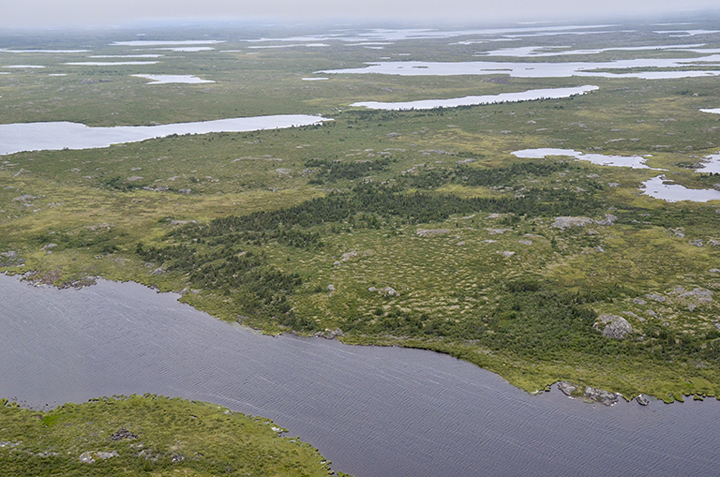A new study by NASA has found that parts of Canada and Alaska are greening as a result of climate change.

NASA used 87,000 images from its Landsat satellites over 29 years. The images illustrated a changing landscape: a greening in northern Quebec, western Alaska and other northerly regions.
READ MORE: Warming Arctic creating smaller migratory birds: study
Temperatures are warming faster in the Arctic than any other place on Earth. The region is experiencing longer growing seasons and soils are experiencing changes. Tundras are growing shrubbery, and those that are already there are getting thicker. While the repercussions aren’t immediately understood, there is mounting evidence that this could eventually affect the carbon cycle.
“It shows the climate impact on vegetation in the high latitudes,” said Jeffrey Masek, a researcher who worked on the study and who is the Landsat 9 project scientist at NASA’s Goddard Space Flight Center.
Using images from two Landsat satellites, the researchers found that “extensive greening” is occurring in the tundra along Canada’s northern coast, as well as in the tundra of Quebec, Labrador and western Alaska.
Interestingly, northern forests greened in Canada by about 29.4 per cent, while they declined in Alaska by 2.9 per cent.
“The greening trend was unmistakable,” Masek and colleague Junchang Ju wrote in the paper.
NASA’s Landsat satellites are able to measure down to an area of 30 x 30 metres, allowing it to find small changes.
The researchers examined other data provided by a different sensor on the satellite. Though it did turn up some difference in some areas, the trend was similar, with larger and more plants in the Arctic.
The team plans to continue their research, in particular forests in Quebec.
- Ont. First Nation calls for chemical plant to be shut down amid ‘dangerously high’ benzene levels
- Ottawa looks to launch national flood insurance program within 12 months
- Nova Scotia scraps spring bear hunt idea, public ‘very divided’ on issue
- Ecuador rations power, declares emergency as drought limits hydro output






Comments